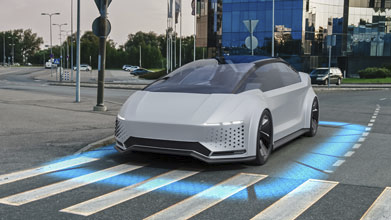Cloud native EDA tools & pre-optimized hardware platforms
Synopsys is a leading provider of electronic design automation solutions and services.
Synopsys is a leading provider of high-quality, silicon-proven semiconductor IP solutions for SoC designs.
Synopsys helps you protect your bottom line by building trust in your software—at the speed your business demands.
The evolution of USB technology from USB 2.0 to USB 3.1, and soon USB 3.2, has brought a significant change in how devices connect and interact. With the adoption of USB Type-C, we're seeing a universal connector that works across various devices like PCs, phones, media players, cameras, and flash drives. This shift means the end of different connector types like A, micro-B, or micro-AB, simplifying consumer choices as they can use one cable for everything.
In this new era, phones can act as dual role devices (DRD), functioning either as a host or a device. For example, a phone can be a device when connected to a PC or a host when linked to a printer. The USB On-The-Go (OTG) standard previously defined this functionality, especially for scenarios where one phone connects to another. However, as we move forward with USB 3.1 and beyond, OTG becomes redundant. Dual Role switching in these newer versions is done automatically through context switching. This means if you connect your phone to Type-C headphones to play music, the phone automatically switches to Host mode.
The move to Type-C also signifies moving away from USB OTG. OTG, defined back in 2001-2002, allowed products like flip phones to act as a host or a device. But with Type-C, all this role switching occurs at the application or software level, either manually by the user or automatically based on context. For example, if you want to transfer photos from a friend’s phone, the negotiation and transfer happen seamlessly in the background.
Wireless technology has reached a point where direct wireless printing or instant photo sharing is possible. However, for devices that might not support wireless but have Linux drivers for printers, USB's wired data exchange becomes crucial. An android device, for instance, can plug into a printer, switch roles to become a host, and print directly. This is particularly useful for scenarios like car rental returns where a handheld terminal is required to print receipts – it’s cost-effective and efficient.
The most common use case for Dual Role Devices is in devices with a single port that need to function as a host occasionally, such as for connecting to a mass storage drive. This flexibility allows users to offload, backup, or access files on a flash drive quickly.
Incorporating a DRD into a product is a trivial incremental cost but offers significant flexibility. With software enabling this feature as needed and just one version of the silicon, it simplifies the design and manufacturing process.
For a bit of entertainment, here’s a link to a letter I found quite amusing last summer. It's a refreshing read away from the technical world of USB.
As USB technology continues to evolve, it simplifies connectivity and broadens the range of possibilities for device interaction, demonstrating the ever-advancing nature of digital connectivity.
Continue Reading
Synopsys Collaborates with Arm to Drive Automotive Design Excellence
Mar 13, 2024 / 4 min read













